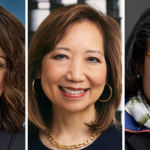While most Big Law firms have emphasized the importance of increasing diversity in their firms of late, a new study by the Institute for Inclusion in the Legal Profession (IILP) found that Asian women in law are chosen least often by corporations looking to hire counsel, and the vast majority of diversity spending goes to hiring white women.
“When corporate clients, even those who value diversity, are thinking about outside counsel, they are not giving significant amounts of business to women, to people of color,” said Sandra Yamate, CEO of the IILP. “Native American women and Asian American women are the poorest in terms of this.”
White men, by a wide margin, are the clear winners. And even though white women have made greater strides in recent years, few are among the top rainmakers at most major firms. And the majority of corporations in the study give out a meager amount of business—less than 10%—to racial or ethnic minorities.
Roughly a quarter of corporations surveyed said they have given no business at all to Asian American lawyers, while nearly 72% said they award less than 10% of their business to Asian American lawyers. Native American lawyers have seen a similar lack of representation: 41% of corporations said they gave Native American attorneys no business at all, and almost half of corporations said they gave them less than 10% of their business.
This lack of business makes it incredibly hard for Asian Americans, particularly women, to advance in the legal profession. Although Asian Americans in law enter the private sector at the highest rates, they advance at the lowest.
“The findings confirm what APA [Asian Pacific American] lawyers and myself have felt—that we don’t get the attention,” Alan Tse, general counsel of Jones Lang LaSalle, said about Asian American lawyers. “When people talk about diversity, we are left out of the conversation. The reality is that while 12-14% of associates are APAs, they are only 4% [of] equity partners.”
Some believe Asian Americans are so readily ignored when it comes to leadership positions because they are just not perceived as leadership material.
“White men are accorded the presumption of competence,” said Hailyn Chen, co-managing partner of Munger, Tolles & Olson. “They fit our ideal of a leader. They’re right out of central casting.”
Some Asian American lawyers also partly blame themselves for their politeness and tendency to be more reserved. “There’s no doubt it’s part of our culture,” said Allen & Overy partner Sapna Palla. “I was like that when I came here when I was 18. I was much more deferential.”
There are, however, ways to address this inequality.
“I’m a natural introvert but I realized I have to talk—a lot,” Chen said. Being assertive can be “off-putting” to some people, she acknowledged, but “sometimes you have to give up likability.”
“Whether you’re a litigator or a corporate lawyer, there’s advocacy involved,” Palla said, and noted that she had to learn the techniques of self-advocacy herself.
Chen also emphasizes the need for women to be each other’s champions. And as in-house legal departments diversify, this is becoming increasingly possible.
“As in-house legal departments diversify, I have seen more diversity in assigning business,” said Thy Bui, a partner at employment firm Constangy, Brooks, Smith & Prophete in Los Angeles. “My clients have largely been women, and not necessarily Asian women.”
Naturally, clients and law firms have a significant role to play as well. They will need to start putting Asian American lawyers on the diversity radar and be more mindful of unconscious bias in order to eliminate such stark inequalities.






















